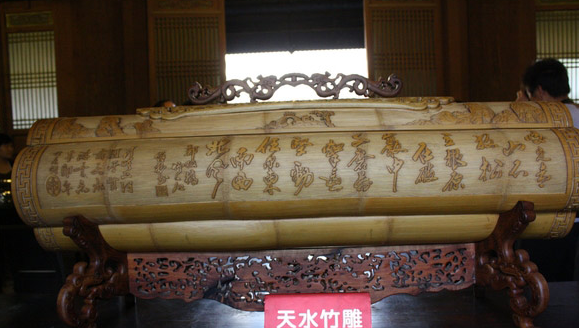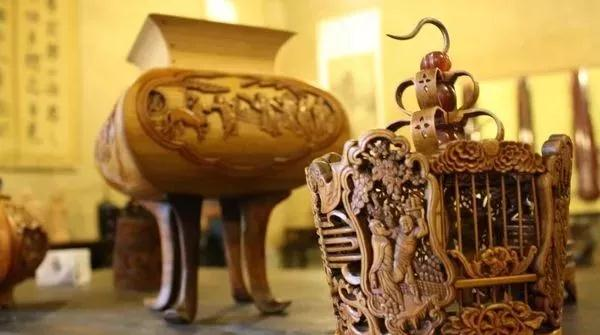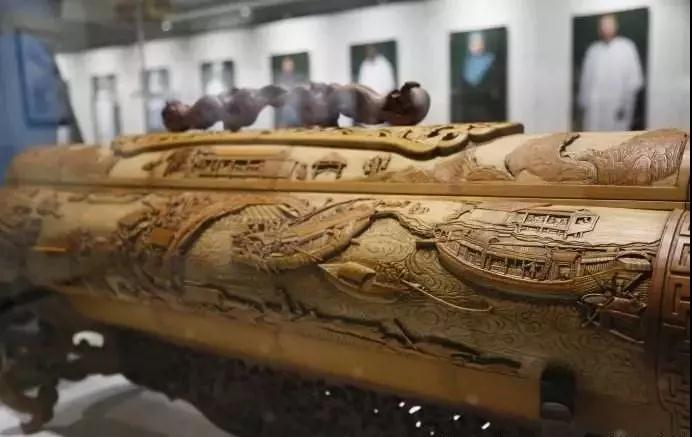Artist carves Qingming Shanghetu on bamboo
A carved bamboo box featuring the famous Song Dynasty (960-1279) painting Qingming Shanghetu, or City Life, has been amazing visitors to an ancient civilian residence in Qinzhou district, Tianshui city, Northwest China’s Gansu province.
The artwork, 120-cm long and 60-cm in height, was made by Wu Yunsheng, an inheritor of the Tianshui bamboo carving.
The technique, which prevails in Tianshui, is also called bamboo engraving. It was included in the list of the provincial intangible cultural heritage in 2008.
Local artists carve decorative patterns and characters on bamboo utensils or furnishings and make ornaments from bamboo roots.
The Tianshui bamboo carving integrates various techniques, such as high and low relief, hollowing-out and circular engraving.

A bamboo carving artwork is displayed at an ancient civilian residence in Qinzhou district, Tianshui city, Northwest China’s Gansu province.
The carvers select and soften bamboos before working them. They usually paint historical stories on bamboo in an innovative way. Then they draw lines with carbon brushes and carve images layer by layer before continuous refinement.
According to Wu, the intangible cultural heritage boasts a history of more than 200 years and its patterns adopt the elements of Fuxi, the primogenitor of Chinese culture. Items are usually created based on the prototype of local historical figures. Every piece is unique and has no replica.

Carved bamboo ornaments on display
Wu said it took him about three years to finish the artwork. The complicated process and low profit margins scare people out of the industry. Wu’s only heir is his daughter.
Though the carved bamboo artworks in Tianshui are sold in Hong Kong, Macao, Taiwan and some foreign countries such as Germany, France and South Africa, Wu considers that the inheritance and protection of the technique outweigh its commercial value.
Wu said he would not sell his artwork featuring Qingming Shanghetu but rather plans to open a museum, where visitors can appreciate the artworks for free. He said he would donate them to public institution when he gets older.

Wu’s carved bamboo box featuring the famous painting Qingming Shanghetu
-
As AI encounters Dunhuang's art, the ancient caisson ceiling bridges centuries to the present.
View all stories

 Gansu thrives from green development
Gansu thrives from green development  >
>